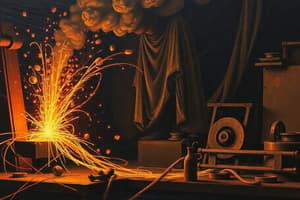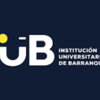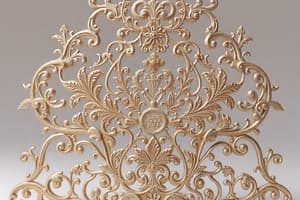Podcast
Questions and Answers
What is metalworking?
What is metalworking?
- The process of shaping and reshaping metals to create useful objects (correct)
- The process of extracting metal ores from the earth
- The process of melting metals into a liquid form
- The process of painting metals to protect them from rust
What are the three broad categories of modern metalworking processes?
What are the three broad categories of modern metalworking processes?
- Forging, casting, and welding
- Smelting, milling, and turning
- Forming, cutting, and joining (correct)
- Grinding, brazing, and soldering
What was the most advanced metal for tools and weapons before the advent of iron?
What was the most advanced metal for tools and weapons before the advent of iron?
- Tin
- Gold
- Copper
- Bronze (correct)
What is casting in metalworking?
What is casting in metalworking?
What is turning in metalworking?
What is turning in metalworking?
What is grinding in metalworking?
What is grinding in metalworking?
What is brazing in metalworking?
What is brazing in metalworking?
What is soldering in metalworking?
What is soldering in metalworking?
What are some common surface treatment techniques in metalworking?
What are some common surface treatment techniques in metalworking?
Flashcards
What is metalworking?
What is metalworking?
The process of changing the shape of metals to create useful objects, parts, assemblies, and large-scale structures.
What is forming in metalworking?
What is forming in metalworking?
A category of metalworking processes that involve changing the shape of metal without removing material.
What is cutting in metalworking?
What is cutting in metalworking?
A category of metalworking processes that involve removing material from a workpiece to achieve a desired shape.
What is casting?
What is casting?
Signup and view all the flashcards
What is turning?
What is turning?
Signup and view all the flashcards
What is brazing?
What is brazing?
Signup and view all the flashcards
What is soldering?
What is soldering?
Signup and view all the flashcards
What is riveting?
What is riveting?
Signup and view all the flashcards
What is heat treatment?
What is heat treatment?
Signup and view all the flashcards
Study Notes
Metalworking: Shaping and Reshaping Metals
-
Metalworking is the process of shaping and reshaping metals to create useful objects, parts, assemblies, and large scale structures.
-
The historical roots of metalworking predate recorded history; its use spans cultures, civilizations and millennia.
-
Modern metalworking processes can be categorized into one of three broad areas known as forming, cutting, or joining processes.
-
Prehistoric metalworking involved shaping soft, native metals like gold with simple hand tools, through the smelting of ores and hot forging of harder metals like iron, up to highly technical modern processes such as machining and welding.
-
Copper ore, being relatively abundant, and tin ore became the next important substances in the story of metalworking. Using heat to smelt copper from ore, a great deal of copper was produced.
-
Until the advent of iron, bronze was the most advanced metal for tools and weapons in common use.
-
Skills related to extracting metal ores from the earth began to evolve, and metalsmiths became more knowledgeable. Metalsmiths became important members of society.
-
Metalworking generally is divided into three categories: forming, cutting, and joining.
-
Casting achieves a specific form by pouring molten metal into a mold and allowing it to cool, with no mechanical force.
-
Cutting is a collection of processes wherein material is brought to a specified geometry by removing excess material using various kinds of tooling to leave a finished part that meets specifications.
-
Milling is the complex shaping of metal or other materials by removing material to form the final shape.
-
Turning is a metal cutting process for producing a cylindrical surface with a single point tool.Metalworking Processes
-
Lathes are machines that remove material from a rotating workpiece to produce a desired shape.
-
Modern lathes use electric motors to power the spindle.
-
The carriage is a platform that can move parallel and perpendicular to the axis of rotation.
-
A cutting tool is held at the desired height by the toolpost.
-
The tailstock can hold centers to secure the workpiece or cutting tools.
-
Other operations that can be performed on a lathe are chamfering, parting, threading, boring, drilling, and knurling.
-
Modern CNC lathes can produce most turned objects in 3D.
-
Grinding uses an abrasive process to remove material from the workpiece.
-
There are many threading processes including cutting threads with a tap or die, thread milling, single-point thread cutting, thread rolling, cold root rolling and forming, and thread grinding.
-
Brazing is a joining process that involves melting a filler metal into a capillary formed by two workpieces.
-
Soldering is a joining process that occurs at temperatures below 450°C.
-
Riveting is a joining process that involves passing a rivet through the holes of two pieces of metal and forming permanent heads onto the ends of the rivet.
-
Mechanical fixings include screws and bolts, and are often used in flat-pack furniture.
-
Metals can be heat-treated to alter their properties.
-
Electroplating and thermal spraying are common surface treatment techniques.
Studying That Suits You
Use AI to generate personalized quizzes and flashcards to suit your learning preferences.





